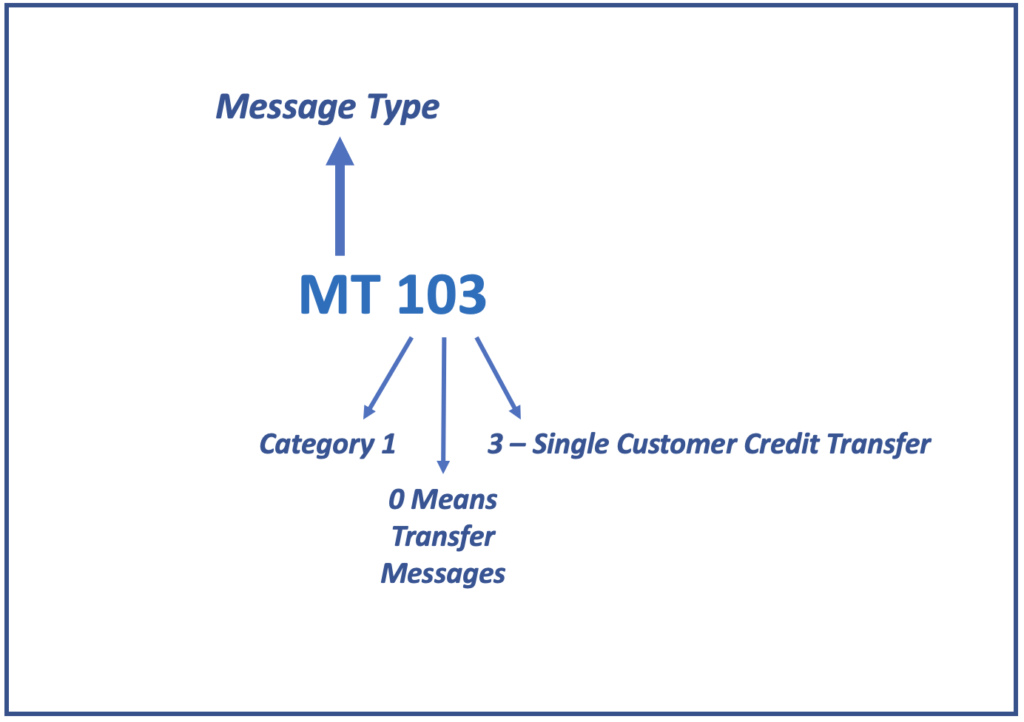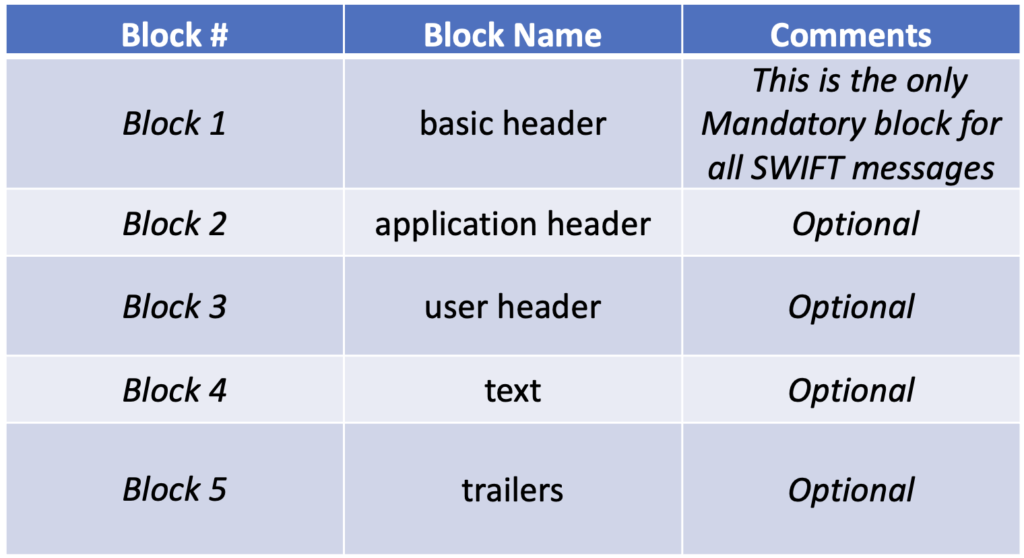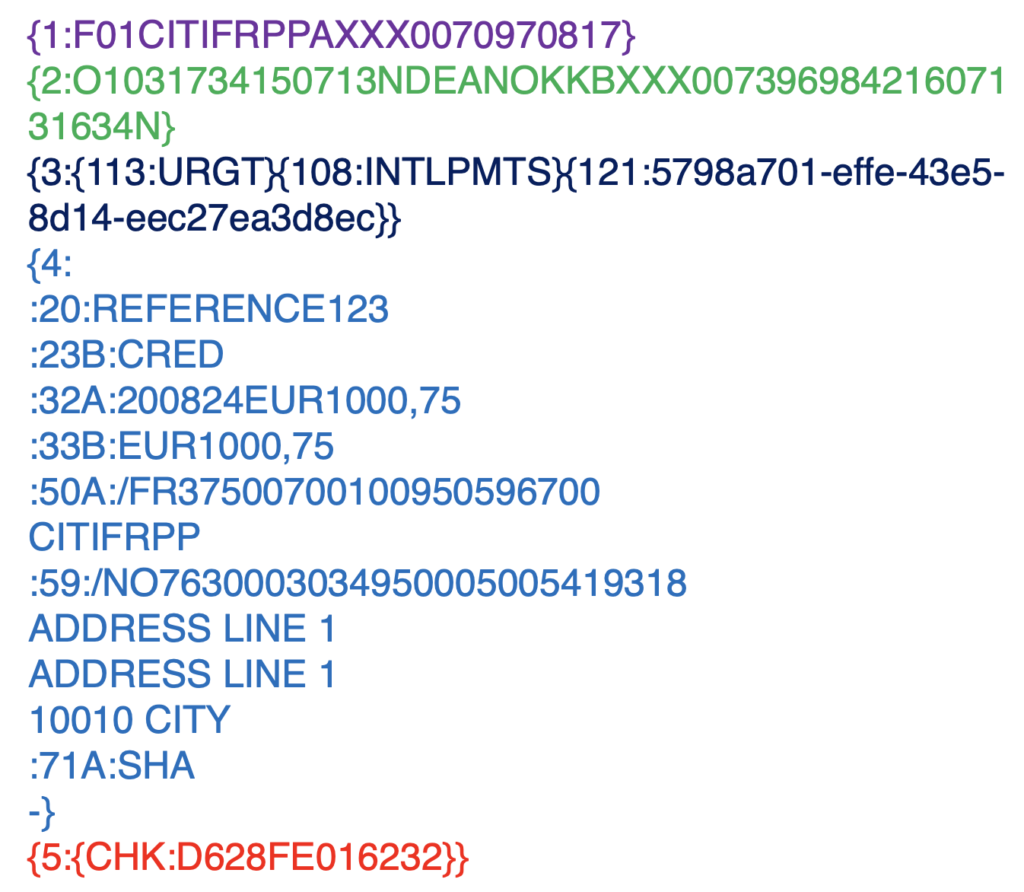SWIFT MTs – Key Details
In this article, we are going to cover some key details on the SWIFT MT message. Let us dive right into the topic
Naming Convention
SWIFT MT messages have a very simple naming convention, it is easy to understand and is straightforward.
The first question that might pop up in our mind is, “what does MT stand for??” MT simply stands for Message type.
This is followed by a 3-digit number
1st Digit – Category of the message
2nd Digit – Group of the message
3rd Digit – Type of the message
Category – Describes the underlying business function of the message. Example: Category 1 = Customer Payments and Cheques.
Group – Describes the function of the message within the specified category. Example: 11n = Category 1 Cheque Payment Messages.
Type – Describes the specific function. Example: 112 = Status of a Request for Stop Payment of a Cheque.
Usually, there are three types of groups (At least from a payments perspective)
0 – Transfers
1 – Cheques
9 – Common Group
Let us now take an example of a simple MT103 and try to understand the name

SWIFT message blocks
There are a total of 5 blocks in a SWIFT message. In this article, I am just going to introduce them but in the next one, we will split them into individual components and analyze them in detail.
Each block starts with the block number and contains a specific set of data.


The original message type that was developed by SWIFT and a subset was later made into ISO15022.




Blog Comments
Santosh Kumar
October 24, 2021 at 8:53 am
Thank you. Keep on sharing.
Deva Kumar
October 24, 2021 at 10:03 am
Beautifully explained!!!!!
Mithun
November 23, 2021 at 3:06 pm
Well explained